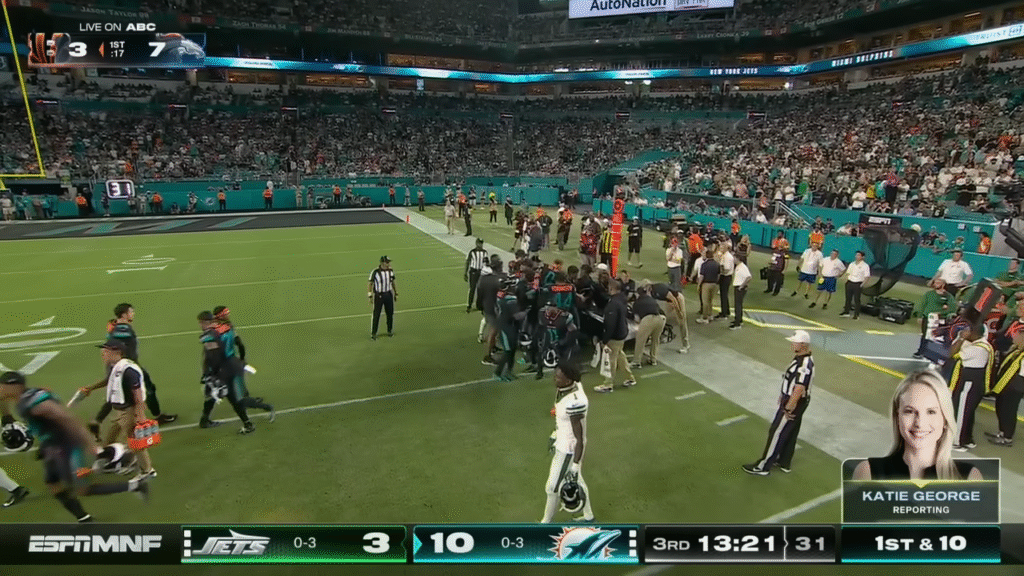A dislocated knee injury is not only painful but can also be life changing. Unlike a typical knee sprain or twist, a knee dislocation involves a complete misalignment of the knee joint, often due to high-energy trauma like a car accident, sports injury, or significant fall. When this happens, the femur (thigh bone) and tibia (shin bone) are forced out of their natural positions, and the ligaments, nerves, and blood vessels surrounding the knee can be severely damaged.
The initial moments following a dislocated knee are alarming. The pain is intense, the knee swells immediately, and the leg may feel numb or appear pale. These signs suggest that there’s something more than just a dislocation at play. A knee dislocation is a medical emergency, and prompt action is necessary.
How Does a Knee Get Dislocated?
To understand the gravity of a dislocated knee, imagine how it can happen. Picture an athlete in full motion, sprinting across the field, when a tackle comes in unexpectedly, forcing the knee joint beyond its limits. Alternatively, imagine a driver involved in a high-speed collision. In both scenarios, the knee joint can be violently dislocated. The bone, ligaments, nerves, and arteries are at risk of being injured in one swift motion.
The knee, as complex as it is, holds critical importance for movement. It’s the hinge that connects the upper leg to the lower leg and bears the weight of your body, making any disruption to its alignment deeply impactful.
Common Symptoms and First Aid for Dislocated Knees
When a knee dislocation occurs, the symptoms are unmistakable. Besides the excruciating pain, the knee will look visibly deformed or out of place. Swelling follows almost immediately, and the leg may become pale or feel numb. These signs should raise an immediate red flag: this is not a common sprain. The first thing to do is keep the injured leg still and avoid trying to realign the knee yourself. Ice can help reduce swelling, but only a doctor can properly evaluate and treat a dislocated knee.
In many cases, the knee may spontaneously pop back into place, but don’t let this fool you into thinking it’s okay. Even if the knee returns to its normal position, the injury might still have caused ligament damage or affected the nerves and arteries around the joint.

The Road to Recovery: A Lengthy Journey
Recovery from a knee dislocation is never quick, and it depends on the severity of the injury. The ligaments around the knee, especially the ACL (anterior cruciate ligament), are often torn in these types of injuries, making recovery more complex. Even after the knee is relocated properly, surgical repair might be necessary to restore its stability.
For many, recovery involves several stages. Initially, the focus is on reducing swelling and pain. Then, the real work begins: rehabilitating the knee to restore movement and strength. This can take several months, sometimes up to a year or more, depending on the extent of the injury.
Doctors often recommend physical therapy to rebuild strength in the surrounding muscles and ensure the knee remains stable. With time, many people can return to their daily routines, but it’s not uncommon for them to feel some instability in the knee, especially if the ligaments didn’t heal completely.
Challenges in Recovery: A Personal Story
Athletes, in particular, face significant hurdles when dealing with a dislocated knee. Consider NFL wide receiver Tyreek Hill, who recently suffered a dislocated knee. Before the injury, Hill was known for his explosive speed and ability to change the game. The dislocation of his knee cast doubt on his future performance. In such cases, doctors must carefully assess not just the structural damage, but also the emotional and mental toll the injury takes on the individual.
For Hill, and others like him, the road to recovery can be long and mentally draining. The fear of never regaining full mobility or athletic ability is something that many athletes struggle with. But with the right support system, focused rehabilitation, and perhaps even a change in approach to the sport, recovery is often possible. It’s a reminder that the body can endure remarkable healing, even after such a serious injury.
Can You Fully Recover from a Dislocated Knee?
The short answer is: it depends. Every injury is unique, and the recovery time can vary greatly depending on the specifics of the damage. However, many people do fully recover and return to their previous activity levels. That said, knee dislocations can also result in long-term complications such as arthritis, ongoing pain, and potential instability. While the majority of people regain function, it’s important to acknowledge that not everyone’s journey is the same.
Famous cases like that of NFL players Marcus Lattimore and Nick Chubb illustrate the wide range of recovery outcomes. Lattimore, after a severe knee dislocation during college, was never able to fully return to professional football, while Chubb, after multiple knee injuries, has managed to return to top form. These examples highlight the unpredictability of recovery but also show that with determination and medical intervention, a successful comeback is possible.
Looking Ahead: Advancements in Treatment and Recovery
As technology and medical science continue to advance, so do the options for those recovering from knee dislocations. From minimally invasive surgeries to stem-cell treatments and robotic physical therapy, the future of knee injury treatment is looking bright. Additionally, innovations in rehabilitation techniques and customized recovery plans are helping individuals regain strength and confidence in their knee joints.
With the right care, recovery from a dislocated knee injury is not only possible, but many athletes and active individuals return to their previous levels of activity. It’s a long road, but one that’s worth the effort for many.
Conclusion
A dislocated knee injury is serious and should never be taken lightly. Its immediate effects can be overwhelming, and the recovery process can feel endless. However, with timely medical care, a personalized rehabilitation plan, and a resilient mindset, recovery is within reach. For athletes and active individuals, the dream of returning to their sport or activity is often realized, though the journey will vary. So, whether you’re an athlete facing the challenge or someone simply recovering from a traumatic injury, remember that patience, persistence, and proper medical care are key to making a full recovery.
Bio Data & Career Information
| Name | Tyreek Hill |
|---|---|
| Birthdate | March 1, 1994 |
| Age | 31 |
| Nationality | American |
| Sport | NFL (American Football) |
| Position | Wide Receiver |
| Team | Miami Dolphins |
| Injury | Dislocated Knee |
| Career Highlights | Super Bowl Champion (LIV), 6× Pro Bowl, 3× First-team All-Pro |
For more information on dislocated knee injuries, visit MSD Manuals on Knee Dislocations.
